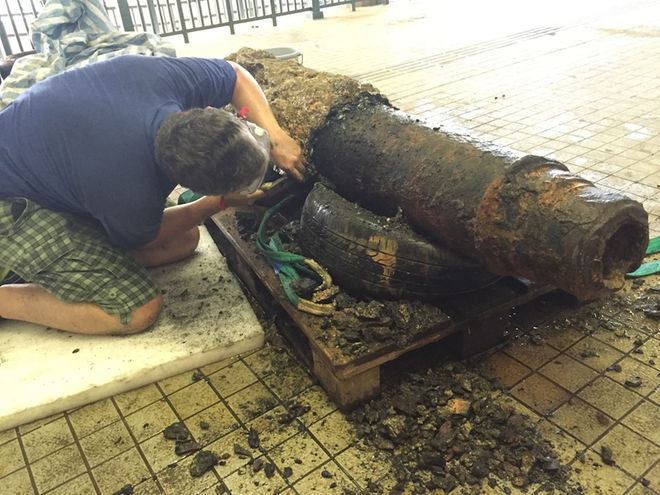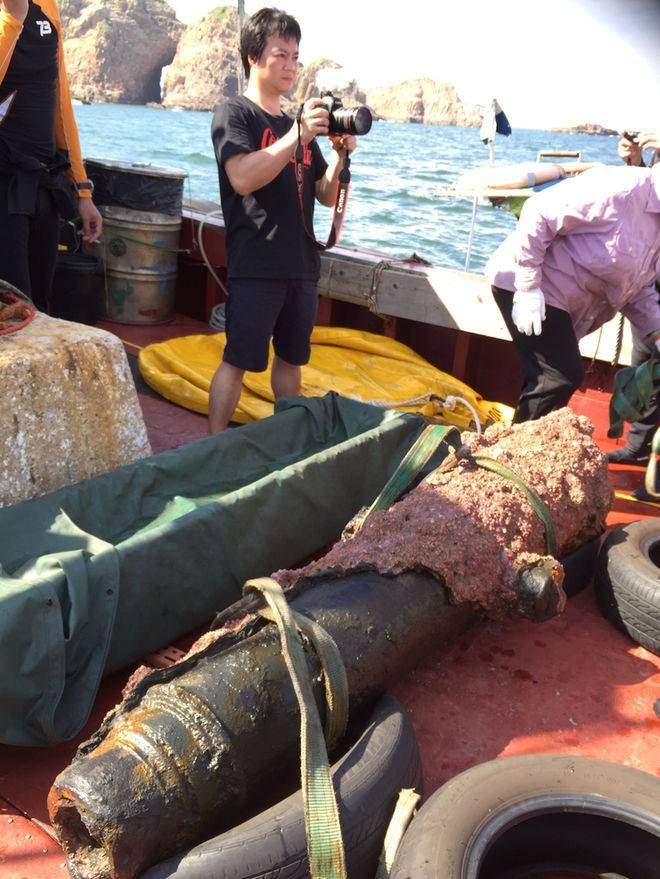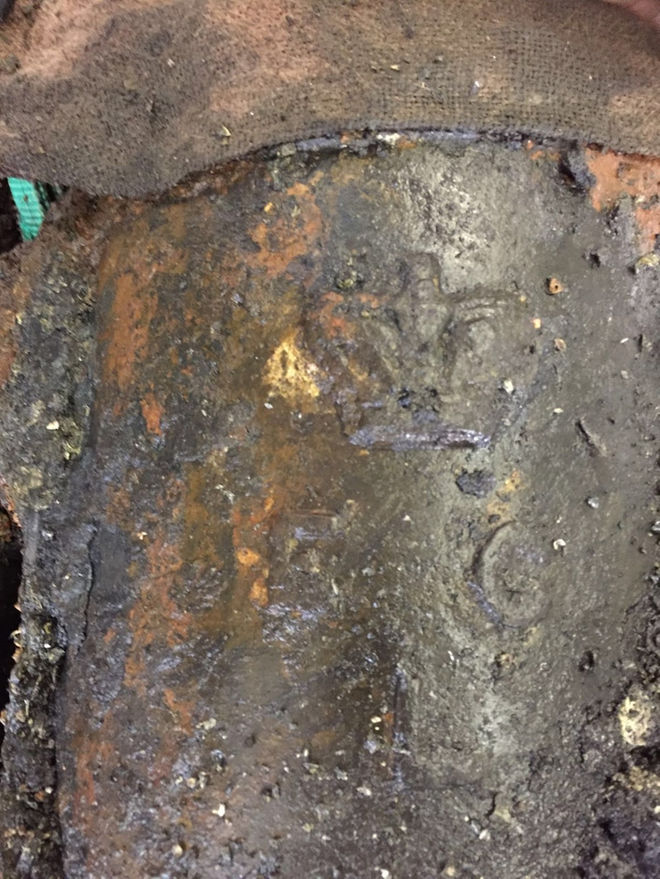Deep within the waters surrounding Hong Kong lays one of the oldest maritime artifacts to be found in China. A group of divers recently uncovered a 1,000 year old granite anchor stock and a cannon that dates back to the 19th century.

Photo: Live Science
Experts believe that this discovery might lead them to uncover more hidden treasures beneath the harbor city. Bill Jeffrey, the archaeologist working with Hong Kong’s Underwater Heritage Group, comments that, ” We see as this as the tip of the iceberg. The Hong Kong SAR [Special Administrative Region] is 60 perecnt water and yet nearly no archaeology has been done under water here.”
The granite stock, which is known as the crosspiece that can be found on most anchors, was around 6 feet long. This piece lay 10 feet below water and was situated near Hong Kong’s High Island. After investigating this ancient maritime artifact, experts have discovered that this granite stock dates back between 960 to 1279 A.D. This anchor fits the exact style and material that would have been used during China’s Song Dynasty.
The Ancient Anchor
During the Song Dynasty, this type of granite anchor would have been placed on a wooden shaft that measured between 6 and 10 feet long. The anchor would have also been equipped with a series of wooden flukes that would allow the anchor to dig into the seabed.

Photo: Live Science
Jeffery from the University of Guam states that “We know that ships in the Song Dynasty used these types of anchors, although it could be from the Yuan Dynasty [A.D. 1271 to 1368] that came after.”
Jeffery also speculates that this anchor could have been used on a merchant vessel during the Song Dynasty. This vessel would have sailed south in order to trade with Hong Kong and its surrounding cities. Archaeologists have stated that there is no evidence of a shipwreck near the area where the anchor was recovered. However, broken pottery pieces have been found in the surrounding area. These pottery pieces date back to the 17th century and even later. Experts believe that this particular site was once used as an anchorage for larger ships.
Pirates
During their second excavation, seven divers took 2 days and 25 dives in order to recover the cannon from the seabed. This cannon weighs 1 ton and measures to be 6 feet long. Experts consider this cannon to be a “cannonade” or a “gunnade,” which is smaller than the standard 24 pound “long gun.”

Photo: Live Science
After a thorough inspection, experts found marks that resemble the letters “ECL” along with a British crown that have been engraved on the barrel. These marks are similar to ones that have been engraved on cannons that date back to 19th century Europe. Cannons similar to this one have been discovered in places such as New Zealand, Japan, and India. Experts believe that this particular cannon was placed on a merchant vessel as a defense against pirates.
Archaeologists hope to conduct another expedition to recover a smaller gun that was also found on the seabed near the cannon. Jeffery comments that, “We didn’t get that because we ran out of time, but that will be interesting to bring up, because it’s another piece of the jigsaw puzzle of this site.”
What Now?
Now that they’ve recovered these amazing artifacts, professionals will begin the two year process to remove centuries of sediment. Once they’ve finished the cleaning process, experts hope that the cannon will be put on display in the Hong Kong Maritime History Museum.
“Lots of archeology in Hong Kong has been done on land but they stop at the waterline, so really nothing’s been done underwater.” Jefferey states. “We hope that this may help to stimulate things in Hong Kong as well as Asia-Pacific in general. Hong Kong has 236 islands, so potentially there are a lot of shipwreck sites and other types of sites, perhaps even prehistoric sites, around the island and along the coastline.”

